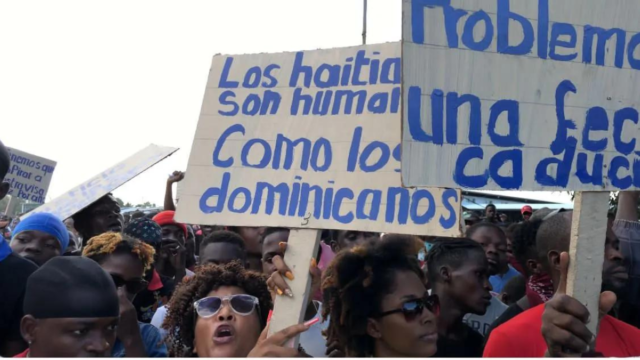
PORT-AU-PRINCE — It took Jeannot 25 years to build a life in the Dominican Republic and just one night for it all to disappear, leaving him and his family in Haiti, homeless in the country he left nearly three decades prior.
Jeannot, a pseudonym The Haitian Times is using to protect the man’s identity, recounted how Dominican authorities came into his home in Las Americas, an area not too far from the capital Santo Domingo. That night, May 19, Jeannot, his pregnant wife and their four children were in the house he had bought land years ago to build on when they heard strange noises.
“We were home in bed when cars surrounded the house,” Jeannot, 42 years old, said. “There was a dog at the entrance of the house. They killed it. They barged into the house, beat and slapped us, handcuffed us, then put us in a car.”
What followed was a series of abuses, including being thrown in jail for four days, as Dominican authorities drove them toward Haiti. His wife, who is about one month from her due date, was not only denied a doctor, authorities beat her throughout the ordeal too.
“I still don’t understand why they did this to us,” Jeannot said.
Some say the answer lies in deep seated racism rooted in the two countries’ shared colonial history and mistrust of one side of the island by the other. However, many said, that’s still no excuse for mistreating people like Jeannot or summarily rounding up anyone of darker skin, including Black tourists who aren’t Haitian, to send to Haiti. Thus, the rise in recent clashes between Haitian residents watching the busloads of Haitians driven over and the Dominican border authorities tasked with cracking down on Haitian migration.
“These mass deportations are nothing but racist acts,” said Sam Guillaume, a spokesperson for GARR, the French acronym for the Support Group for the Repatriated and Refugees.
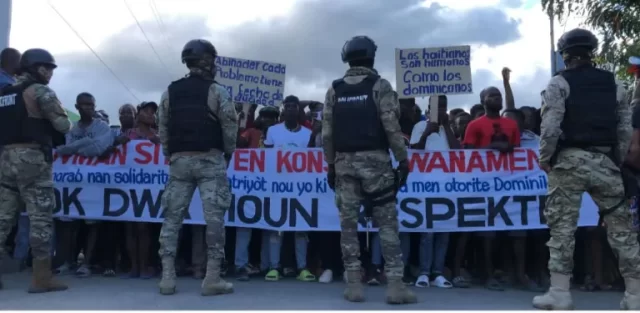
“Among the people expelled, there are even Dominicans who were taken for Haitians because they are dark-skinned,” Guillaume said. “Migration agents do not even check the papers of those they arrest.”
Seeing the mass movement, the United Nations High Commissioner for Human Rights Volker Turk requested a stop to the expulsions, but Dominican President Luis Abinader rejected the call, saying the DR has been more supportive of Haitians than any others.
“The expulsions will not only continue, but they will be multiplied,” said Abinader, speaking from the National Palace with journalists Nov. 10.
An uneasy, racially tinged co-existence
Haiti and the Dominican Republic’s relationship is fraught with resentment, racial tension and the heavy shadow of the 1937 massacre of tens of thousands of Haitians by Dominican dictator Rafael Trujillo. However, over the decades, both Haitians and Dominicans have crisscrossed Hispaniola for work, business and pleasure. Throughout, Haitians have had coexistence with their Dominican neighbors marked by deep mistrust and financial need. Mistrust given the history, yet at times turning to it for work and leisure as the Dominican Republic’s economy and infrastructure grew, Haiti disintegrated.
Haitians have walked or driven across the Dominican Republic to cut sugar cane in the bateys, clean homes and babysit – becoming a reliable labor force. A 2017 census recorded some 500,000 Haitians living in the Dominican Republic, though the real number is not known now. Haitian immigrants make up the majority of the workforce in agriculture and in the burgeoning construction industry.
Work like that drew Deus Pierre to the Dominican Republic in seeking a better life. In November, migration authorities repatriated him without letting him take his belongings.
“That would have allowed me to rebuild my life in Haiti, because I had some money,” Pierre said. “Now I’m going to go home to Port-de-Paix and start all over again.”
He now stays in a GARR shelter for refugees.
“For me, it’s not about legal papers, but about race,” Pierre said. “The migration agents do not check whether we are legal or not. Their main goal is to deport Haitians.”
“Basically they treated us like animals. The migration agents locked me up for three days in an unsanitary space. The little food we received was also really bad.” HAITIAN MAN, 19, EXPELLED FROM THE DOMINICAN REPUBLIC
Expulsions based on skin color, not status
Haiti National Office of Migration, ONM said recently deportations and repatriations have increased from 7,000 to 15,000 to 20,000 per month. Over the last three months Dominican officials have intensified the expulsion of Haitians.
To drum up support, Dominican President Luis Abinader justified the mass round-ups during diplomatic visits and on social media by saying his country has done enough to support Haiti through its crises.
In October alone, 14,800 Haitians were expulsed, most of them undocumented, according to the Support Group for Repatriated and Refugees, GARR, including 9,455 men, 3,798 women, 870 boys and 768 girls. Among them 1,448 were repatriated through unofficial city points such as Cornillon, Lascahobas and Savanette.
This latest campaign to expel Haitians targets all dark-skinned people regardless of their status, Haitians and advocates said. Videos posted on social media show migrants’makeshift dwellings in Dajabon, a border town, being ransacked and torched, while the perpetrators shouted racist and xenophobic curses.
Visitors and tourists are also not safe from the Dominican crackdown. In a warning to travelers issued Nov.19, the State Department said Dominican migration agents have targeted those believed to be undocumented migrants as they look particularly for people of Haitian descent.
The expulsions occur on a large scale and ensnare people of all legal status, even those born in the Dominican Republic to migrant workers. Students with a legal visa, long time residents with legal status, migrant workers in the process of satisfying paperwork requirements – none are spared.
Since the year began, according to data from the Dominican Republic Migration Office and other agencies, the Dominican Republic repatriated 60,204 Haitians between August and October. That figure brought the total number for 2022 to 108,436, the Dominican Republic President’s Office said in a Nov. 9 tweet.
In October, an estimated 8,660 Haitians were sent back, with 1,500 turned away at the border, according to a report by GARR, a watchdog and advocacy group in Haiti.
In all, GARR stated that between 300 and 700 Haitians are returned daily from various regional border towns, including Cornillon, Savanette and Fonds-Verrettes.
One young man, 19, describes how he was arrested while leaving work.
“The migration agents locked me up for three days in an unsanitary space,” said the 19-year-old, who declined to give his name for fear of being targeted. “The little food we received was also of poor quality. Basically they treated us like animals.”
Protesters insist on respect for humans, the law
At the Ouanaminthe-Dajabon bridge – one of the official border crossings – Haitian residents began lashing out at the Dominican border authorities in recent weeks. Moved by the plight of fellow Haitians being driven into their city, the residents threw rocks and other items at authorities in protest against the mistreatment of Haitians.
But tensions reached a peak Nov. 21. That day, residents closed the border gate and welded it, keeping the movement of all people and goods in the process and setting off tension within Haiti’s government, which later opened the gate.
Two days later, Wideline Pierre, the northeastern departmental director of the Ministry of the Environment, resigned from her position for being a principal participant in the closing of the gate. Pierre said in a letter dated Nov. 23 that such mistreatment conflicts with her civic commitment in the social and political struggle toward the improvement of [our] society.
Many of the protesters lamented that the mass expulsion is the latest in a long series of non-stop deportations and repatriations that began in earnest in 2021. Their main objection is that the movement of people is taking place without respect for existing laws regulating migration and relations between the two countries.
“An autonomous country can manage its territory and can intercept a person living clandestinely in its country and deport him,” Negot Bonheur Delva, a representative of Haiti National Office of Migration, ONM said. “We only hope that they [Dominican Republic] respect the standard rules.”
The Human rights group hoped the Dominican government would respect the established repatriation standards, given the difficulties faced by many in producing documents.
Haiti’s current political and economic crisis is one of the reasons that drive the mass migration to the neighboring country. Since 2021, thousands joined demonstrations in Haiti’s capital and other cities to protest against skyrocketing crime, kidnappings and the rising cost of living.
A lucrative business with double victims
Dominican migration agents play the double role of law enforcement and smugglers and have profited during the crackdown, some advocates and repatriated people say. Haitians who are about to be ejected can often negotiate with the authorities at the border to stay on the Dominican side.
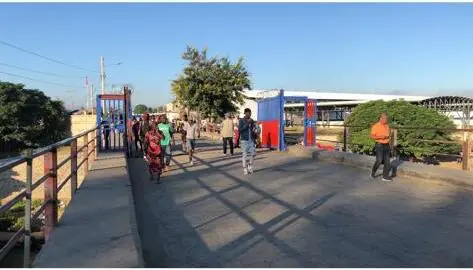
“The same bus that brought Haitian migrants back to the Haitian-Dominican border can take them back to where they were stopped if they can pay off the migration agents,” says Myke Lysias Joseph, a spokesperson for GARR.
At the border, expelled Haitians have called family members to transfer money so they can bribe the migration guards. Fees paid to those Dominican migration agents vary between 5,000 to 10,000 pesos, about $90 to $185, to allow Haitians to return to the Dominican Republic.
This reprieve, however, proves temporary as some time after, the same people who paid off the authorities can still be arrested again and sent back to Haiti.
Jeannot and his pregnant wife did not have the chance to negotiate staying in the Dominican Republic, as they were jailed, then taken to Haiti.
“The migration agents took away everything I had bought to prepare for the birth of the baby,” Jeannot said.
“They even took our refrigerator, left the used items and then destroyed our house,” said Jeannot’s wife Mariame, also a pseudonym, said. “They took me away with no clothes and barefoot.”
Human rights groups feel powerless in crisis
On any given day at least two to three buses full of migrants or at most five to six buses are driven to the border in bright yellow school buses. According to Delva, the International Organization for Migration works closely with ONM to help the migrants return home by providing transportation costs. At the border, there are also members of the Ministry of Public Health who provide medical care, especially to those who have been mistreated by immigration agents.
ONM said there are irregularities in the process of deportation of Haitians.
The Dominican Republic does not respect reception protocols often enough and returns undocumented migrants to unofficial points where the Haitian state representative is not present. There are at least 200 dropping points between Haiti and the Dominican Republic, however, there are only 4 official points where the Haitian government representatives are present, Delva said.
On Nov. 29, demonstrators in Haiti’s capital marched to the Dominican consulate to denounce the mistreatment of Haitians living in the Dominican Republic. Some protesters wore white jerseys and held signs sharing their grievances against the Dominican government’s recent crackdown on Black immigrants and visitors assumed to be Haitian.
In front of the consulate, the demonstrators called for an end to the mistreatment of Haitians, speaking in French and Spanish. They later went to the official residence of Prime Minister Ariel Henry to ask that he demand the Dominican government stop mistreating Haitians during the expulsions.
A 19-year-old man who was in GARR’s shelter said he left Haiti because of the rampant gang violence. He didn’t want to carry a gun and join a gang like a lot of other people his age had done.
“I’m not going to stay in Haiti to join a gang and get killed,” the 19 year old said. “My mother is sick and I have to take care of her. Right now I’m repatriated, but I will still go to the Dominican Republic as soon as the opportunity arises.”

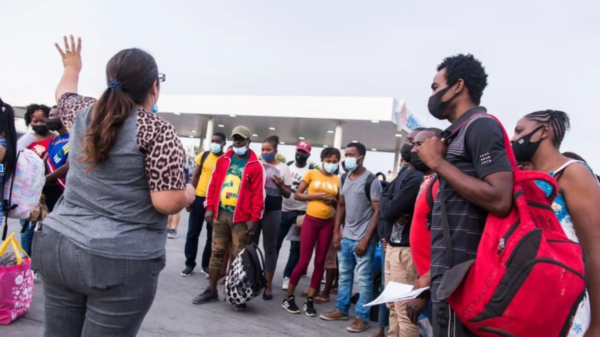

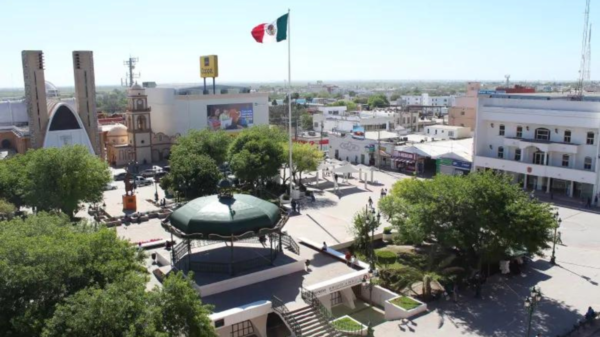
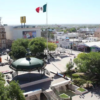
You must be logged in to post a comment Login